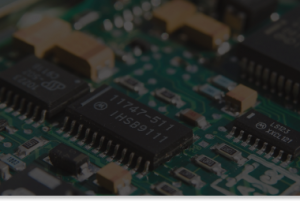India’s Electric Vehicle Market: A Look Back at 2023 Get...
Read MoreVineet Dravid
Founder & CEO oorja
Hybrid Modeling: Bridging Physics and Machine Learning
“All models are wrong, some models are useful”. This profound statement was made by British statistician George Box way back in 1976. How true this is when it comes to solving partial differential equations! At times, we get so wedded to the method: FEM, FVM, FDTD and so on, that we forget that we started simulation to simplify and speed up design. Like Ptolemy’s model of the solar system, we keep adding complexity to our models in the vain hope of achieving “the perfect solution”.
The fallout is that today, predictive modelling is complex: it involves several complicated procedures that are difficult to perform, slow to compute, and parametrization is tedious at best. One needs to be an expert in a sub-field of simulation to perform meaningful analysis. The fallout: product developers who need the outcomes of these tools to optimize designs don’t have access to these tools and rely on a set of experts to help them. This creates a bottleneck that slows the design process and makes the product life cycle more expensive.
A hybrid modelling approach is one where data and physics can be merged to provide an effective solution. Why is this helpful? Even today, physics-based models are
– Computationally intensive
– Unable to handle fuzzy boundary conditions you encounter in real-life
– Cannot handle uncertainty
– Efficiently solve inverse problems
Data alone cannot solve the problem for a couple of reasons. First, for complex physical systems, obtaining the amount of data necessary for accurate predictions over a range of conditions is HUGE. This takes time and is very expensive. When it comes to predicting the behaviour of physical systems, we are in a position where we have some physics and some amount of data.
A hybrid model leverages both these sets of information to provide predictive results. So, what is the recipe? Unlike FVM or FEM, there is no single recipe to perform a hybrid analysis. There are several approaches. Some of them include:
- Using machine learning to support a physics-based solution: In this approach, meshing, convergence or parameter estimation is performed using ML, and then the physics-based problem is solved using traditional methods
- Using the physics-based model to generate data: In some cases, you have some data available, but it is insufficient to perform effective training using ML techniques. Physics-based solutions can be used to generate synthetic data in such cases. ML methods are then used to perform training and prediction.
- Using a combination of a physics-based solution and data-driven models, a pure physics-based solution can introduce a bias due to the choice of parameters used. This can be supplemented by data to “correct” the physics-based solution.
- Using neural networks to solve the governing equation: The governing equations are fed into the ML algorithms to perform predictions. Stay tuned for a detailed blog on this exciting topic.
- Using physics-based loss functions for ML: Here, one can use physics-based loss functions to train experimental data.
These are some, but not a comprehensive list of approaches which come under the umbrella of hybrid modelling. Any method that combines data- and physics-based methods to provide a solution is a hybrid analysis. Is it perfect? No. But it can help engineers optimize with speed. And that is all that matters!
To explore how you can use oorja to optimize battery design, contact us at info@oorja.energy
Latest Blog Posts
Hybrid Modeling: Bridging Physics and Machine Learning
Hybrid Modeling: Bridging Physics and Machine Learning Get Started Contact...
Read MoreAccelerated Degradation Predictions using Hybrid (Physics+ML) Simulations
Accelerated Degradation Predictions using Hybrid (Physics+ML) Simulations Get Started Contact...
Read More

